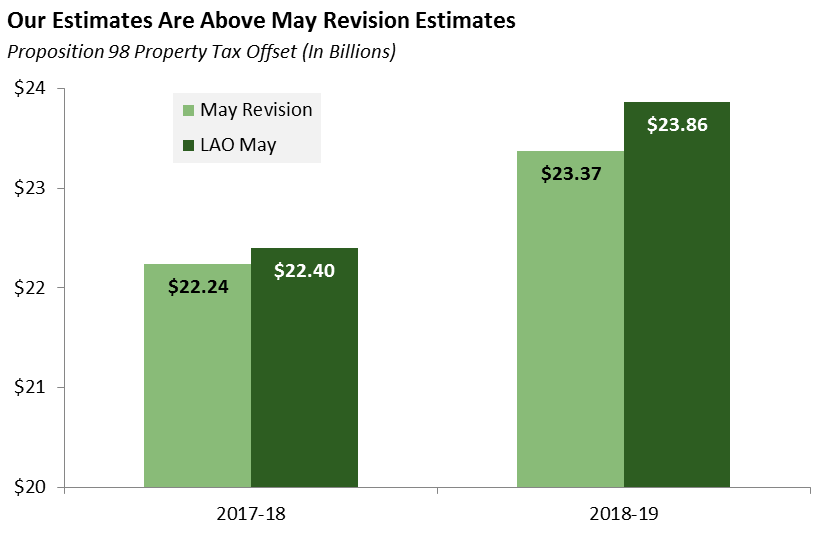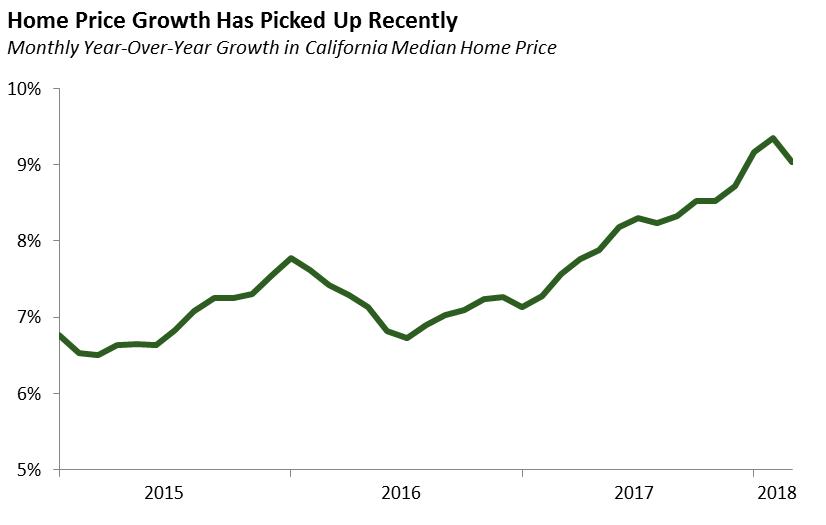2018-19 May Revision: Property Tax Estimates
May 15, 2018
Local property taxes distributed to school and community college districts reduce the state’s cost of meeting Proposition 98 school funding requirements. We recently noted that our office’s estimates of local property taxes offsetting Proposition 98 are about $650 million higher than the administration’s across 2017-18 and 2018-19. As shown in the graphic below, about $500 million of this difference is in 2018-19.
Our higher estimates primarily reflect higher assumptions about growth in taxable property values. Whereas the administration assumes property values will grow 5.6 percent in 2018-19, we assume growth of 6.4 percent. In 2017-18, taxable property values grew 6.2 percent.
As we have discussed (here and here), new construction and property sales are key drivers of growth in taxable value. In general, when construction and/or sales are high taxable values tend to grow more quickly. This is especially true when home prices are growing quickly. Recently, construction and home prices have been growing rapidly, suggesting growth in taxable values should be strong in 2018-19. This is somewhat offset by a modest slowdown in home sales. Nonetheless, we think it is reasonable to assume a modest uptick in growth in taxable values in 2018-19. The graphics below offer more detail on recent trends in construction, sales, and prices.
Residential permitting in the last 12 months was 21 percent higher than the prior 12 months. Similarly, commercial permitting was 14 percent higher. Both our and the administration’s economic outlooks expect this trend to continue, with the administration having a slightly stronger outlook for permits than our office. In addition, home price growth has accelerated, going from 7 percent in 2016 to 8 percent in 2017 to 9 percent (annualized rate) thus far in 2018. In contrast to rising construction and home prices, home sales in the last 12 months were 6 percent lower than the prior 12 months.



